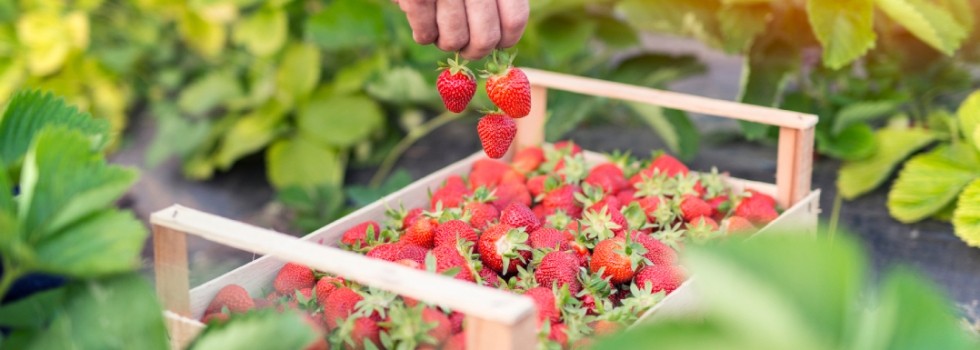Promotional Features
Peeling back the potential of fruit and vegetable ingredients to innovate the F&B industry
Compared with some areas of the F&B industry – where it sometimes feels like ingredient concepts are entering the realm of science fiction – fruit and vegetables can be seen as a little ordinary and conventional. The truth is far more exciting.
From helping to create a more circular food system to transforming the taste, texture and nutritional properties of an already established product, fruit and vegetable ingredients open the door to virtually infinite opportunities for delicious invention. Maarten Lameire, recently appointed Operations Director at SVZ, explores the potential that fruit and vegetable ingredients can offer, and the company’s ongoing mission to show the industry there’s far more to these familiar products than meets the eye.
What does ‘innovation’ mean to a fruit and vegetable ingredient supplier like SVZ?
Maarten Lameire (LM): For many in the industry, fruit and vegetables can be perceived as quite straightforward, but ‘innovation’ for us is all about unlocking the full potential of these unsuspecting ingredients. Take strawberries, for example. Did you know there are more than 600 varieties? Each variety and sub-variety has its own particular colouring, sugar content and nutritional profile, all of which can be harnessed to formulate applications with specific characteristics through expert crop growing, sourcing, harvesting and processing.
For us, innovation is about helping our customers find new and exciting ways to address consumer trends, reformulate products for better nutritional credentials or build a more sustainable future for the food industry. We’re able to deliver on this mission thanks to our broad portfolio and in-depth knowledge of agronomy, supply-chain management and responsible sourcing. These traits give us the flexibility needed to keep up with fast-moving trends, and the autonomy to do so ethically and sustainably.
Where does the inspiration for new concepts and ingredients come from?
LM: Broadly, we group our projects into three categories: concept innovation, circularity innovation and collaborative innovation. Our concept development arm is where our food technologists get to explore ‘blue sky’ thinking by anticipating evolving consumer trends and preferences. For circular innovation, our main influence is the planet. The food industry plays a vital role in building a safe, secure and sustainable future, and we understand our role as a leading provider of all-natural, plant-based ingredients.
Finally, our approach to collaborative innovation sees us working in partnership with our customers to craft specialised solutions for their unique processing goals. This can mean reverse engineering a juice concentrate or puree blend to meet a pre-established product positioning, reformulating a new beverage and smoothie with 100% natural, clean label ingredients, or exploring the use of naturally colourful ingredients to replace colour additives. By merit of the markets and sector spaces we already operate in, we’re uniquely placed to identify gaps where our particular brand of natural innovation can really add value.
What ingredients have been developed recently by your team’s ‘blue-sky’ thinking?
LM: Sugar reduction has been a major theme over the past few years, with many brands turning to various forms of sweeteners to limit or remove sugar from their products. The issue here is not only that some of these sweetening agents are seen as less desirable by consumers because they are artificially derived, but they may negatively impact on flavour. However, replacing the sugar in a beverage or bakery recipe is not just a matter of taste.1
In many applications, sugar or sugary ingredients, such as apple and orange juice in the case of smoothies, perform an important bulking function within the recipe, delivering volume and textural benefits as well as a delicious taste profile. To give food and beverage producers the versatile, volumising solution they needed to reformulate effectively without high levels of sugar, our experts developed our new Carte Blanche ‘white vegetable base’ concept.
The first of its kind to be launched at an industrial scale, these premium fruit and vegetable ingredients are derived from white pumpkin, white carrot, rice and other neutrally coloured produce. Depending on the application, our experts will then craft the perfect blend of these ingredients to meet the exact nutritional profile and organoleptic qualities required.
With a naturally lower sugar content, and a neutral flavour profile and colour, Carte Blanche performs the same bulking capabilities as conventional bases while still allowing the recipe’s ‘star ingredients’ to shine through. This is a great example of how our team’s knowledge of industry trends combines with formulation expertise to create something entirely new.
What about innovations that have been prompted by a specific customer request – how do you approach them?
LM: The truth behind our collaborative innovation process is that every scenario is different, so there isn’t really a ‘typical process’ to follow for each project. That being said, there are certainly key methodologies our technical experts employ to ensure every new ingredient concept ticks all the boxes our customers expect. As mentioned earlier, occasionally customers come to us with a specific end-product in mind and ask for our support with sourcing and incorporating the right ingredients to get them there.
We also offer our collaborative innovation services to customers with proprietary intellectual properties (IPs) or existing products they are looking to tweak to better meet a new trend or regulation. We are often able to create specialised puree or juice blends that offer all the functional benefits our customers want, without the need to invest in additional manufacturing equipment or processes.
To give an example of a recent collaborative innovation project, one of our customers came to us to assess the viability of creating juice and concentrates derived from a new cabbage variety. Though new territory for us, we were quickly able to find a partner farm capable of planting and maintaining a crop of this variety, leveraging both our extensive partner farm network, as well as our reputation as an environmentally responsible supplier. Later in the year, a different cabbage ingredient was requested and we were able to move more quickly to establish a physical crop source and apply agricultural learnings from our previous trial.
Once harvested, we move to lab-scale testing, during which the new ingredients are put through their paces to ensure they can deliver the right taste, texture and functional properties. On completion of successful lab tests, the cabbage ingredients entered one of many scale-up phases at our state-of-the-art pilot plant. This pint-sized version of our real fruit and vegetable processing line makes it easy to predict ingredient performance at an industrial scale and helps brands avoid the wasted product or investments that can occur when concepts are sent straight to production.
If customers are sufficiently ‘commercially confident’ that the ingredient will be a good return on investment, it can then transition to full-scale production at one of our main processing facilities.
How can innovation address issues like circularity and environmental responsibility?
LM: It’s no secret that the food industry has a big waste problem – a 1.3 billion ton one.2 So much natural goodness is lost every day because produce is considered ‘ugly’ or not suitable for sale or is allowed to spoil on shelves before making its way to landfill.
We fundamentally reject the concept of an ‘imperfect’ fruit or vegetable – we’re far more interested in its nutritional value and functional properties than a few extra lumps and bumps. By taking crops that would have otherwise been discarded and transforming them into delicious and nutritious fruit and vegetable ingredients, we promote a more circular food economy.
A recent example we’re especially proud of is our newly launched waste-busting tomato puree, crafted from deliciously ‘imperfect’ produce originally headed for landfill in Belgium. By saving these unloved crops and sending them to our local Rijkevorsel processing facility, we have created a tasty and versatile tomato puree ingredient, ideal for everything from soups to sauces.
As with all our ingredients, customers can count on stringent quality assurance, minimal processing, and a guaranteed delicious flavour, and with our new tomato puree producers there’s the added satisfaction of helping to save tons of useable produce from ending up in landfill.
This project is a small-scale example of our wider commitment to building a greener food and beverage industry for all, as outlined by our c2030 initiative.
What should manufacturers consider when planning future NPD?
LM: When a more open, sustainability-focused mindset is adopted, millions of untapped opportunities presented by ‘humble’ fruits and vegetables become clear. Sometimes it takes having an ingredients partner that knows the fruit and vegetable industry inside and out to fully realise this potential, and that’s exactly what we offer our customers.
With an extensive portfolio, decades of expertise, end-to-end supply chain control, trend awareness and in-depth application knowledge, we’ve got all the ingredients producers need for sustainable success.
To learn more about SVZ’s ingredient innovation expertise and portfolio of high-quality fruit and vegetable purees, Not From Concentrate (NFC) juices and concentrates, visit svz.com.
References
1. Paul Christiansen et al., (2023). A validation of a questionnaire to assess consumer attitudes towards artificial sweeteners, Food Quality and Preference, Volume 103, 104707.
2. United Nations Environment Programme, Promoting Sustainable Lifestyles.


